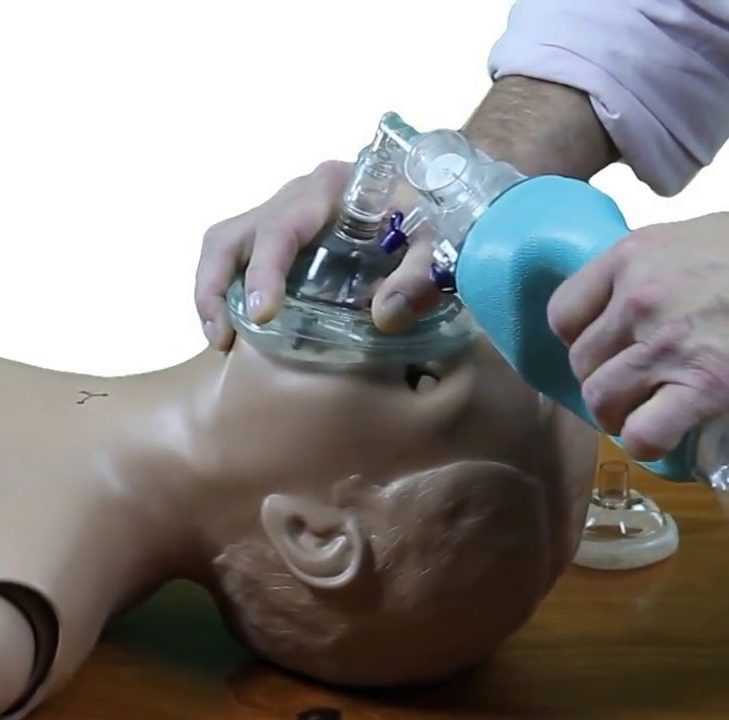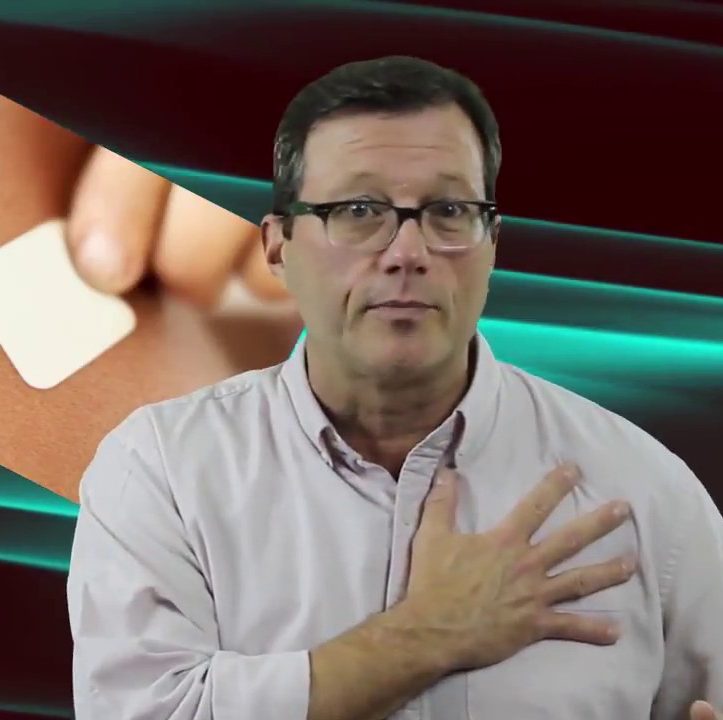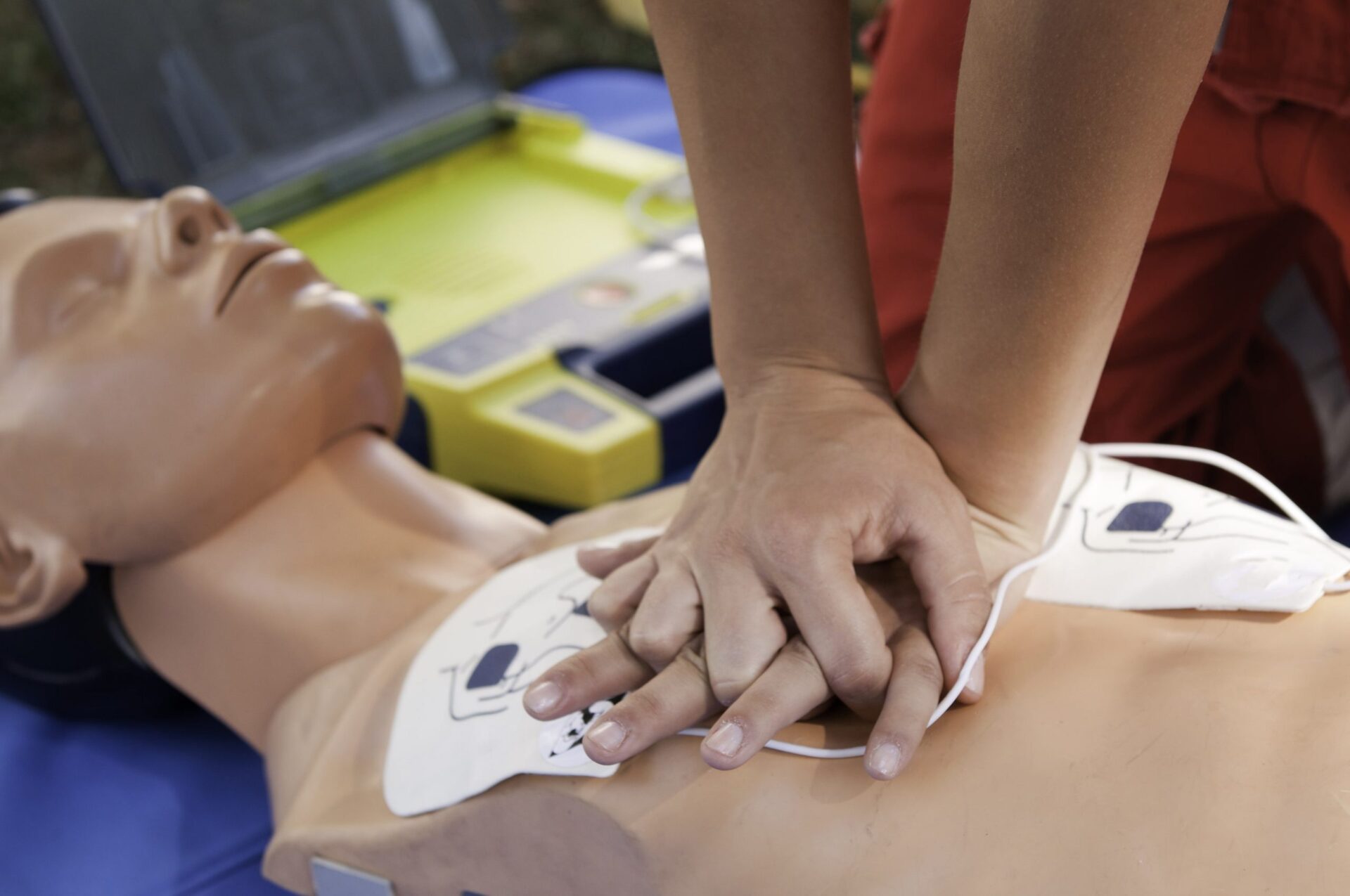Hi, everyone. Welcome back. In this video, we’re going to review operation of the automatic external defibrillator for adults and for children over 8 years old.
First thing is knowing your equipment. If you’re able to, make sure you know your AED because they all act a little differently. Some AEDs have an on switch, an analyze switch, a shock button. Some AEDs will turn on automatically when you open up the lid and take the pads out. Whenever possible, try to know the AED you’re going to be using. There are some times you’re not going to be able to know what AED you’re using, like, say, at the airport when somebody goes down and you’re just running over to get the AED. The good thing is that they’re all simple to operate and they all utilize voice prompts. Really, no matter what AED you grab, it should be pretty easy to operate. Let’s take some time and review that now.
Let’s talk about the operation of the AED and pad placement. You’re going to remove the pads from the AED. The machine may turn on automatically when you remove the pads or there’s going to be an on button. Remove the pads from their packing. You’re going to peel the pads away from their protective lining and adhere them to the patient. The pads need to be placed on the patient’s high-right and low-left, so on the patient high-right, below the clavicle, upper right chest and then low-left side, about midaxillary, almost level with the nipple. The idea is to make a heart sandwich. We need to have the heart between those two pads. Energy moves from one pad to the other pad. We have to have the heart between them. Our goal is to make a heart sandwich. If the machine keeps prompting you to place the pads, that means the pads are not adhering to the patient properly. They have to be adequately adhered to the patient for a couple of reasons. One, the AED has to be able to adequately read the rhythm and determine is the patient in a shockable rhythm. The other reason the pads have to be adequately adhered to the patient is so that the AED, when prompted, can administer an effective shock. We have to make sure those pads are on and on the patient well.
Some special considerations when using the AED and pad placement: If at all possible, once we get started, don’t move the patient. We’re going to keep them right there so we can keep going to work. When would you move the patient? If the scene suddenly became unsafe then, okay, somebody grab a leg on this patient; we have to get out of here. Is the patient excessively hairy? We’re going to put the pads on. If they don’t make good contact because of all this hair, we’re going to keep getting a prompt to put the pads on. We have to remove the excessive hair. Hopefully with the AED was a small kit and in that kit was a razor or some kind of shaver so we can remove some hair. If you don’t have one of those, another technique to kind of ‘de-pelt’ your hairy patient is to put the pad on firmly, rip the pad off, put the pad back on, and hopefully we’ll have good conduction then. If not, you may need to rip the hair off, then use a clean set of pads on the patient. Next, a wet patient. Let’s say you drag somebody out of the water, they’re in a cardiac arrest, and we have to shock them. We’re going to have to dry off the chest. The whole patient doesn’t have to be dry, but they need to be dry wherever we’re going to have the pads so that energy doesn’t get diverted away from the heart. If it’s wet, the energy might follow the water. We need the energy going through the heart, so make sure you dry off wherever the pads are. Next, implanted devices. Let’s say this guy has an implanted cardiac defibrillator. Most implanted cardiac defibrillators are placed underneath the left clavicle, which is fine because we’re putting our pads high-right and-low left. You should be able to palpate and appreciate that implanted defibrillator. Do not place the pad over the top of that. One, it can damage the device, but more importantly, it’s going to divert energy to the defibrillator and divert energy away from going through the heart, which is where we need it to go. Another consideration might be a medication patch. It really doesn’t matter if, say, she has a birth control patch on her heinie. We don’t have to go looking for that. The only time we’re concerned about medication patches is when it’s in an area where we’re going to place the defibrillator pads. If it is, remove that. Most all medication patches have a metal layer to help keep the medicine going one direction inside the body. If you have a medication patch high-right on the patient’s chest, remove that. Do not place a defibrillator pad over that medication patch. Another consideration is you have to bare the chest of the patient. I live in Chicago and it’s starting to get cold out right now, which means my victim most likely is going to be wearing two Cubs T-shirts, a Cubs sweatshirt, a Cubs hoodie, a Cubs jacket, a Cubs parka, a Cubs airlock suit. All that stuff has to come off so we can get to the chest, provide adequate chest compressions, and put our defibrillator pads on. One way we can do this is by using a pair of shears or heavy scissors. Hopefully we’re going to have that in our kit that accompanies our defibrillator.
Next, analyzing and shocking the patient. This is one of the few times during a cardiac arrest that we’re actually going to pause and hold chest compressions, so we want to do this quickly. It’s important nobody is touching the patient when we’re analyzing the rhythm or we’re providing the shock. Again, your AED is going to give you voice prompts. It’s analyzing whether or not this patient needs to be defibrillated. If you’re prompted to shock the patient, make sure you clear the patient before you shock them. “Stand clear. Push flashing button to rescue.” “Okay, I’m shocking. Everybody clear. Clear. Shocking in 3, 2, 1, shock.” “Do not touch patient. Analyzing rhythm.” Nobody is touching this patient when you administer the shock or they’re going to get shocked too. Make sure you say, “Clear. Shocking the patient in 3, 2, 1,” and administer that defibrillation. Immediately after performing the defibrillation, resume chest compressions. You hear the controversy: do we wait or not. No, immediately after providing the shock, immediately resume chest compressions. You’re going to do that for 2 minutes. Then in 2 minutes the AED should go back to reanalyze the patient’s rhythm to see if they need to be shocked again.
This has been a quick review of operation of the automatic external defibrillator for the adult and for children over 8 years old. I’m Mark. Thanks for watching. See you in the next video.
Recommended Articles

Basic Life Support & CPR for Children Video
Review the proper steps of CPR and basic life support for children in our quick BLS algorithm review video.




